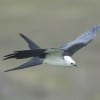 By Jim Stevenson
By Jim Stevenson
I’ve never written an article about a single bird but this time I’ll make an exception. A Swallow-tailed Kite spent several hours flying around my house yesterday, grabbing insects, lizards and tree frogs off the treetops. The dark, cloudy conditions made photography difficult but with a brand new camera (!), it wasn’t horrible. I hope you enjoy it and have a good week. Don’t forget our upcoming field trip Saturday to Brazos Bend State Park, a great place for birds and photography. Let me know if you’re interested! Hey! April is coming, with all the birds!!!
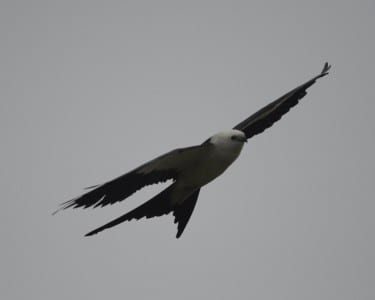
Swallow-tailed Kites are one of five rather unrelated kites in North America, joining the Snail, Mississippi, Hook-billed & White-tailed Kites. Several of these species, including the STKI, have closely-related species around the World in the Southern Hemisphere. This STKI has a real look-a-like in Africa.
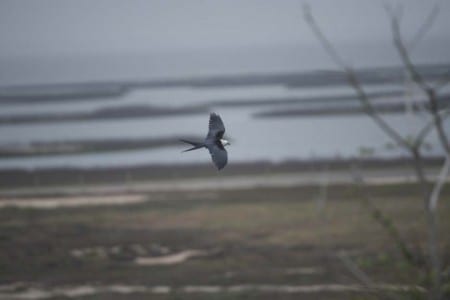
Swallow-tails can ride the wind like few birds, reminiscent of frigatebirds, or gigantic Barn Swallows. Forked tails, like we see in our Scissor-tailed Flycatchers, help stabilize birds in windy conditions, and in the next picture you will see the action of the wings and tail, dealing with the shifting winds coming off the hill on which my house sits.
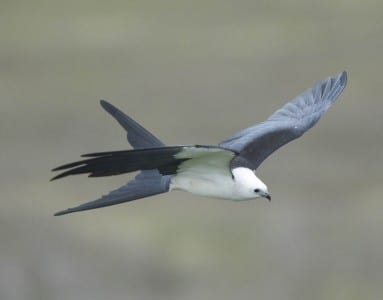
A quick and tricky wind shift caused our hero to raise his right wing and lower the right fork in an effort to stabilize himself whilelooking for food. Eatingmostly insects, lizards and frogs, they don’t have large bills, and their feet are greatly reduced. You almost never see them perched, as they stay on the wings for many hours.
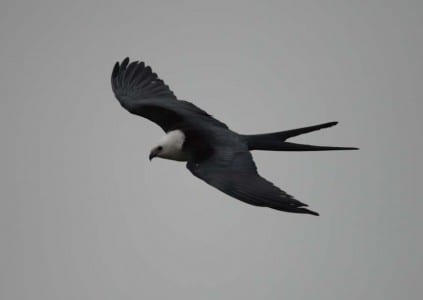
Once, the bird flew way off to the East, toward Jamaica Beach, and I thought it had left. It then wheeled and returned, finally giving me left-handed shots at a high speed. The way he managed the wind was amazingly skillful and seemingly without effort. It is said that frigatebird’s feathers weigh more than their body mass and these kites are close. Too bad they never light.
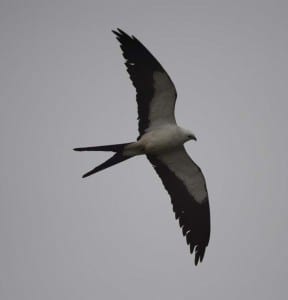
STKI often turn their wings vertically; with a wing span over four feet. He was virtually frozen in the air, watching for food in the limbs below. The primaries and secondaries are black, with the pigment cutting down on feather wear. I believe this is true of the tail as well, but I’m not sure.
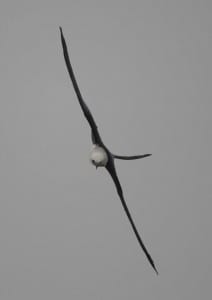
Here’s the vertical look from the front. Isn’t that an amazing bird!
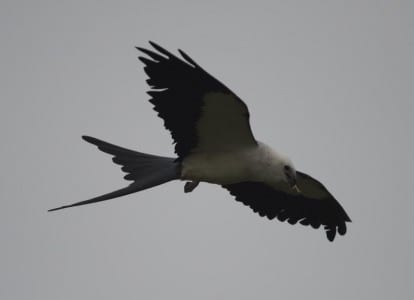
Our hero swooped down to the tip of a wild grapevine and came away with a treefrog! He wheeled away and I couldn’t get a shot until he came back around. By that time the poor frog was on his last leg! I mean, he hardly had a leg to stand on. I guess you could say our hero had a leg up on all the other kites. OK, I’ll stop. A half-hour later he swooped by a large cherry laurel and nailed another frog. If you look hard you can see him picking it out of the tip of the stolen branch. The tree was in flower and I so wish the sun had been out for some color! By the way, I guess you could say the frog wasgetting himself out on a limb. Oh, I promised…
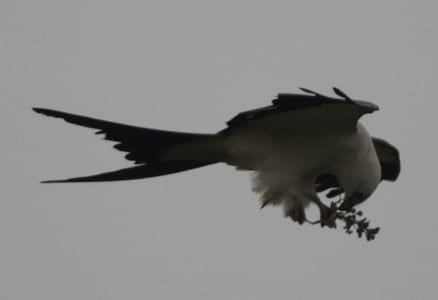
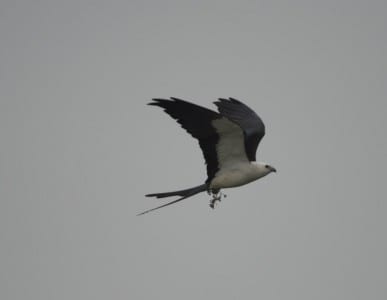
Birds with long, pointed wings don’t flap fast, but rather use slow, laborious flaps. The tapered shape allows the wind to blow right past them with little or no resistance. When he finally left, it was amazing to me how he cut right through the wind. Hawks like accipiters, with rounded wings, have to power their way through the headwind. Too bad they never light…
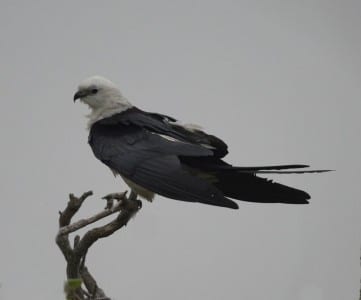
Oh my – he returned and sat on the top of my oak tree, just as tame as could be. From the sky deck I had a rear end shot so I hopped the rail and climbed the steep roof ,made the mistake of being in my socks. Standing on the chimney , I was able to shoot above the other limbs and ka-powee! * Guess I’m back to the shingle life…

 Posted in
Posted in 
























I’ve been seeing them this year in Crosby, TX near Lake Houston.
First time in 22 years.